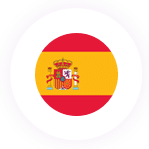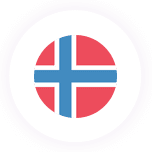Although this website mainly caters to English speakers and details the histories and traditions within Western nations, we cannot deny the large number of Arabic names found among the panoply of given names currently on the American popularity charts. This is due to three main reasons: 1) the growing Arab-American population and the spread of Arab Muslims in other parts of the Western world; 2) the adoption of Arabic names by African-Americans since the 1960s; and 3) the general growing interest in names of Arabic origin (Jasmine, Leila, etc). Even the female name Amber comes to us from the Arabic language.
Arabic is a branch of the Afro-Asiatic language family (other branches include Hebrew, Egyptian and Aramaic). There are currently over 300 million Arabic speakers in the world, largely concentrated in the Middle East and Northern Africa (Iraq, Jordan, Saudi Arabia, Libya, Algeria, Morocco, etc). It is also the language of the Muslim Qur’an. The commonality of the Arabic language largely defines what we would refer to as the “Arab people” but, like most other groups descended from the same general language, Arab people (like the Slavs or the Celts for example) became ethno-linguistically diverse over time, expanding, co-mingling and assimilating with other populations. Furthermore, Arab people may define their own identity through their country of origin, their religion, their religious sect and/or more localized cultural traits which obviously differ from Arab country to Arab country.
Ultimately, the Arab people (and Arabic language) can find its roots on the ancient Arabian Peninsula – that body of land bordered by the Red Sea to the West, the Persian Gulf to the East and the Indian Ocean to the Southeast. Arabs originated from nomadic tribes of ancient Semitic people living in the Arabian Peninsula region (modern day Iraq, Syria, Jordan, Saudi Arabia, Yemen, Oman), dating back to at least the 10th century B.C. Semitic people are accounted for in the Bible as the descendents of Noah’s son Shem (SÄ“m) which is where we get the word “Semitic”. Shem’s sons were the Biblical ancestors to the Arabs, Assyrians, Babylonians, Sabaeans and Hebrews, among others (all of whose languages were closely related in ancient times). In the Old Testament (Genesis), Abraham’s son by Hagar, Ishmael, is considered the forefather of the Arabic people while Abraham’s son by Sarah, Isaac, is considered one of the forefathers of the Israelites.
Ancient Arabs encompassed two main groups, each originating from the desert-dwelling nomadic Bedouin tribe. A branch of the Bedouins became “sedentary” rather than nomadic in the southern portion of the Peninsula where they were able to find enough resources to support a society. The Northern Arabs remained nomadic against the forbidding harshness of the hot, arid desert lands. These nomadic Arabs lacked political, economic or military power in ancient times since they were loose, small tribes always on the go – not to mention they did not have a whole lot to offer from their salty lands (oil discovery would come much later). Meanwhile, the southern Arabian Sabaeans settled into prosperous kingdoms including Saba (possibly equivalent to the Biblical Sheba). The frankincense tree, myrrh and spices from India played an important part in the early trading life of South Arabia. The nomadic northern Arabs were able to adjust to their unfriendly environment (mainly as sheep and camel herders) and co-mingled with the Persians, Babylonians, Jews, etc. Before the rise of Islam, the different tribes of Arabia followed various polytheistic or pagan faiths, some observing Allah as a supreme “creator” deity (similar to the Jewish and Christian God), and later many people of Arab origin converted to Christianity and Judaism.
The prophet of Islam, Muhammad, did not come onto the scene until many centuries later – in the 7th century A.D. Since the other two major monotheistic religions came well before Islam, Islam incorporates many doctrines of its predecessors Judaism and Christianity. Islam originated on the Arabian Peninsula in Mecca and Medina (present day Saudi Arabia), the basis of which was formed by a series of revelations God made to Muhammad Ibn `Abd AllÄh Ibn `Abd al-Muttalib. Islam means “submission” (submission to God) and a Muslim is one who has both submitted to Allah and has recognized Muhammad as God’s prophet. With the rapid rise of Islam and Arabic being the language of the Qur’an, the language and customs of Arabic people began to spread with an early Islamic expansion (either through conquest and/or cultural contact as the Arab Empire grew). Many Islamic Arabs headed north where the climate was more welcoming and they founded the Ummayad dynasty in Damascus and later the Abbasid Dynasty in Baghdad. This Arab-Islamic Empire eventually reached the Western world, and in medieval times, the Arabs were referred to as the “Moors” on the Iberian Peninsula and the “Saracens” by other Europeans.
Brief explanation of the Islam faith: Islam is driven largely by what is known as the Five Pillars of Islam. They are (1) Profession of Faith; (2) Prayer (“sala” is required five times a day); (3) Almsgiving (“zaka” represents the principle of social responsibility); (4) Fasting (“saum” is the observation of Ramadan); and (5) the Pilgrimage to Mecca (“al-hajj” going to where God’s revelations were first disclosed to the prophet Muhammad. **After Muhammad’s death a debate was ignited within the Islamic community over who should succeed the Prophet as leader – this split the community into “Sunni” and “Shi’ite” Muslims. On almost every other fundamental point, the Sunni and Shi’ite Muslims are in basic agreement since they both draw on the Qur’an and the Shari’ah (body of Islamic Law).
The Arab League (an organization founded in 1945 and comprised of 22 Arab countries) defines an Arab as: “…a person whose language is Arabic, who lives in an Arabic-speaking country, and who is in sympathy with the aspirations of the Arabic-speaking peoples.” Today, the Arab people play an important geopolitical role due to their vast reserves of oil fuel and natural gas. Indeed, this is a dominant feature of the Arab world from the simplistic perspective of the West, but the Arab people are truly an amalgamation of ethnically diverse groups spanning vast areas of land in the Middle East and Northern Africa. They are dedicated to preserving their customs and values which are largely rooted in Islam. From this perspective, Muslim Arabs are no different than ethnically diverse Christians or Jews.
The tradition and structure of an Arabic given name is pretty complicated compared to what we recognize from Western naming practices and styles. Here’s an example:
Arabic Full Name: Abu Kareem Muhammad al-Jameel ibn Nidh’aal ibn Abdulaziz al-Filisteeni
Translation: "Father-of-Kareem, Muhammad, jamīl, son of Nidal, son of Abdulaziz, the Palestinian"
Similar to names of other languages, the meanings usually correspond to some adjective or noun. For example: Kareem means “generous”, Muhammad means “praised”, JamÄ«l means “beautiful” and AbdulazÄ«z means “Slave to the Magnificent”, or Slave to God (there are 99 names for Allah/God in Islam). In normal conversation, this person would simply be referred to as "Muhammad" or "Abu Kareem".
The full Arabic name can be quite long. It can consist of a given name (called the ism), nicknames (laqab), and patronyms (nasab) and/or a family name (nisba). Sometimes these names are preceded by a kunya, which refers to the person’s first born son.
The Islamic faith obviously factors in importantly in the Arab naming customs. Various forms of Muhammad, for instance, are quite popular, as are names of Muhammad’s descendents: Fatima, Umar, Ali. Names from the Qur’an such as Adam (Adam), Yousef (Joseph), Ibrahim (Abraham) and Mariam (Mary) are also commonly used. Names that have favorable meanings: Abdallah (“servant of God”); Abdul (“servant of the powerful”); Farida (“unique, precious”); Farah (“joy”); Rahim (“kind, compassionate”); or Ahmad (“more commendable”) are popular as well.










